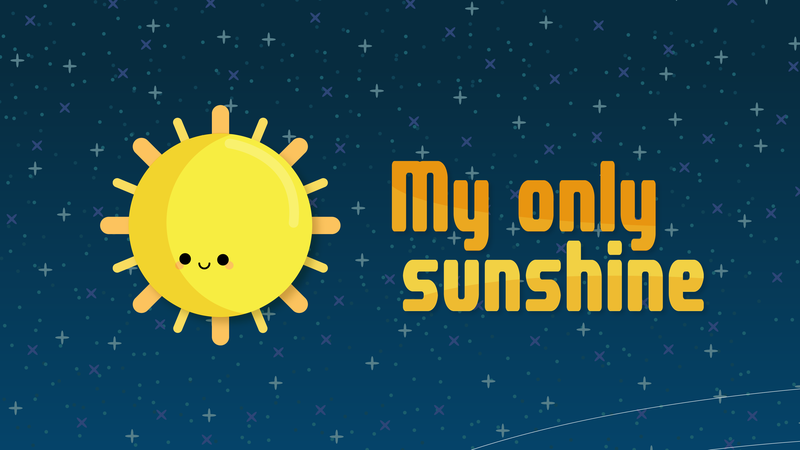Polaris | You are my Sunshine
Awards & Nominations
Polaris has received the following awards and nominations. Way to go!
The Challenge | You are my Sunshine
My only sunshine
An interactive web page that explains how solar panel works, a calculator to know how many solar panels you need in your house and a section to monitor the productivity of your panels.

he main idea was to create an interactive web page to promote, introduce and help people with the new technology that keeps upgrading day to day, that is the solar energy. As we know, this green resource is actually friendly to the environment and provides a great source of electricity and well the only way it can be turned out is by turning off the sun.
POLARIS has created this web page with a friendly design for everybody, from kids to adults, in which all the users will have a proper username and password. That way, each person will have access to the personal database that POLARIS has created in the web. Once logged in, you will see three different levels; easy, medium and expert.
The easy level provides the user an interactive infographic that gives information about the photoelectric effect, the one that is on charge for producing electricity and how solar panels work

The medium level calculates the number of panels that the user needs in order to provide electricity to the whole infrastructure, only by checking the light's statement (average per day, if that information is not given by the light provider, you can calculate the average energy consumed each day by submitting the total per bimester), irradiance (there is a map inside the calculator that approximates the level of irradiance to help the user getting this amount) and the power provided by the solar panel.

Once the total amount has been calculated, POLARIS also added another function to help the user connecting the new technology, giving advices on how to connect the circuit, how to install the panels (depending on the user's location, POLARIS takes the latitude and longitude to give a proper angle for the panels)..


Once the whole system is connected, the expert level comes to take place. In here you can monitor the panels efficiency and the weather's parameters at every moment, that way we can provide a real time feedback for them (we will get back to this in a moment), that is in order to keep the proper function of the whole system and to make sure you get the best efficiency capable for your location.

So in order to get real time feedback, POLARIS has created it's own weather station. It is planned to be accessible for everybody, but mainly for remote locations where solar energy is the main source of electricity.
Those places are not only for Earth’s surface as POLARIS’s station also works on further sites like Mars or even farther, and everything you need is a solar source to produce electricity (again, we will take this point further in a moment). Many may ask, how does this works? And the answer is real simple. The station is made up with an Arduino and a diverse number of sensors that works even in the most Inhospitable places, they are able to read weather’s information in real time for various parameters such as humidity, irradiance, wind’s velocity, temperature, pressure and luminosity, but it can also be upgraded for even more sensors to capture more factors that affect the panels and that way, get a better efficiency. It also counts with a Wi-fi module that connects the Arduino with the web page and saves all the information in the database that POLARIS has created for users. Now let’s get to the Hi-Seas project.

This venture is situated in Hawaii and simulates the exploration of Mars in the Earth. In order to get through this, the Hi-Seas project has created a dome that is planned to use in the inhospite planet. So POLARIS has also created a model of panels that can be used by NASA, of course taking the minimum level of energy needed to supply the most basic instruments that uses electricity inside the dome. This takes from laboratories to house appliances. It can also be used for the total amount of energy the NASA asks for, that is 150,000kW a year or for any other quantity. Of course, POLARIS also takes in consideration the differences of parameters from any other surfaces outside the Earth, and here is where the weather station from POLARIS gets as a main resource of information for the proper efficiency of the system. So this means POLARIS is not limited for Earth’s use and it gives future to the project.
Resources
Hardware:
- Arduino Mega
- Wifi module
- Barometric sensor
- Temperature and humidity sensor
- Photoresistor
- Thermistor
- Panel phovoltatic
- LCD panel
Software and languages of programing:
- Matlab
- Java
- JavaScript
- Python
- Arduino IDE (C++)
- GNUPLOT
- Origin
- Illustrator CC 2017
- After Effects CC 2017
- ProTools
Websites and bibliography:
- https://datos.gob.mx/busca/dataset/parametros-meteorologicos
- http://pvwatts.nrel.gov/
- https://datos.gob.mx/herramientas/portal-interactivo-hidrometeorologico?category=web&tag=energia-y-medio-ambiente
- http://www.iowaenergycenter.org/resources/solar-calculator/
- http://eliseosebastian.tumblr.com/post/45110848903/calcular-un-banco-de-bater%C3%ADas-para-sistemas
- http://inversoressolares.net/
- http://www.energiasolar365.com/articulos/para-que-sirve-un-inversor-solar
- http://www.cemaer.org/como-funciona-un-panel-solar/
- http://www.areatecnologia.com/electricidad/paneles-solares.html
- https://tallerarduino.com/2012/12/24/sensor-dht11-humedad-y-temperatura-con-arduino/
- https://learn.adafruit.com/photocells/using-a-photocell
- http://www.naylampmechatronics.com/blog/43_Tutorial-sensor-de-presi%C3%B3n-barom%C3%A9trica-BMP180.html
- https://www.luisllamas.es/medir-temperatura-con-arduino-y-termistor-mf52/
- http://www.prometec.net/arduino-wifi/
- http://www.naylampmechatronics.com/blog/54_arduino-y-esp8266-como-cliente-web.html
- https://giltesa.com/2016/04/12/7-curso-iot-con-arduino-y-esp8266-wifi-ejemplo-cliente-enviar-datos
- https://www.sfe-solar.com/paneles-solares/calcular-paneles-solares-necesarios/
- http://deltavolt.pe/calculo-solar
- http://propiedades.com/blog/arquitecura-y-urbanismo/cuantos-paneles-solares-necesitas-segun-tu-recibo-de-cfe
- Geometria Solar, presentation for M.C. Horacio Munguía, Universidad de Sonora, 2016.
- Meteorologic data HI-SEAS
Github repository:
https://github.com/CesarApodaca/Polaris
Project's Website:
polaris.cageek.com.mx
SpaceApps is a NASA incubator innovation program.